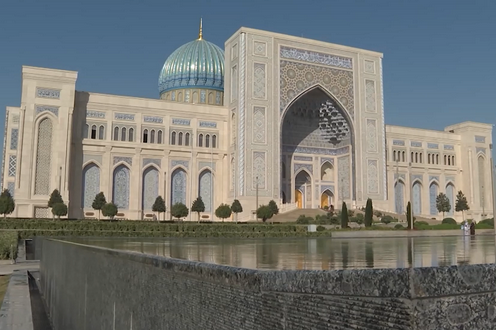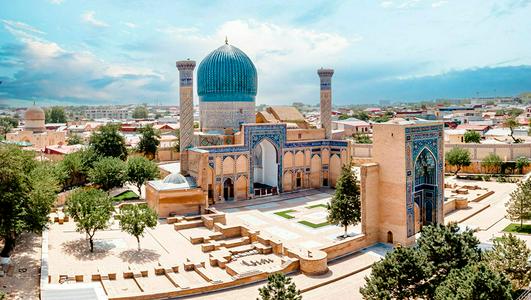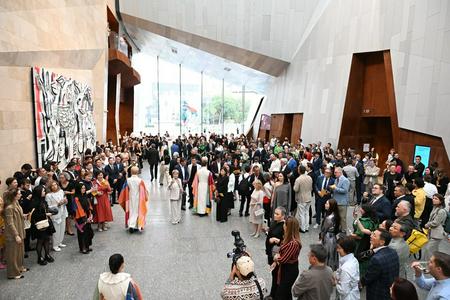The Center for Islamic Civilization hosted the unveiling of its architectural landmark — the Ulugbek Portal, standing 37.7 meters tall and 33.7 meters wide, the Center’s press service reported.
The portal, built on the eastern side of the complex, references the style of 15th-century Samarkand madrasas while incorporating contemporary design elements.
The triple arches at the entrance symbolize the revival of enlightenment and science. The façade is decorated with turquoise tiles, associated with inspiration and purity. Its ornamental patterns combine vegetal and geometric motifs, evoking starry skies and celestial maps in homage to Ulugbek’s astronomical discoveries.
Epigraphic inscriptions in classical Thuluth and Kufic scripts adorn the entrance and edges of the portal. Among them is the Qur’anic injunction “Read!” from the sura Al-‘Alaq, symbolizing the pursuit of knowledge.
The project’s creators emphasize its symbolic role as an architectural reminder of the spiritual and intellectual legacy of Central Asia’s great thinkers, including Ulugbek, Imam Bukhari, Imam Tirmidhi, and Imam Maturidi. The portal’s symmetry expresses harmony between soul and mind, while its artistic elements are meant to inspire visitors in their search for knowledge and self-improvement.
The Center for Islamic Civilization was built next to the Khast-Imam complex. Designed in the style of medieval monuments, it features four 34-meter-high portals and a central dome rising 65 meters. The building houses a Quran hall, a 460-seat conference hall, and a museum with exhibitions spanning the history of Uzbekistan from pre-Islamic times to the present. The Center aims to serve as a hub for studying and reinterpreting the heritage of the past in collaboration with the International Islamic Academy of Uzbekistan and scholarly institutions worldwide.










